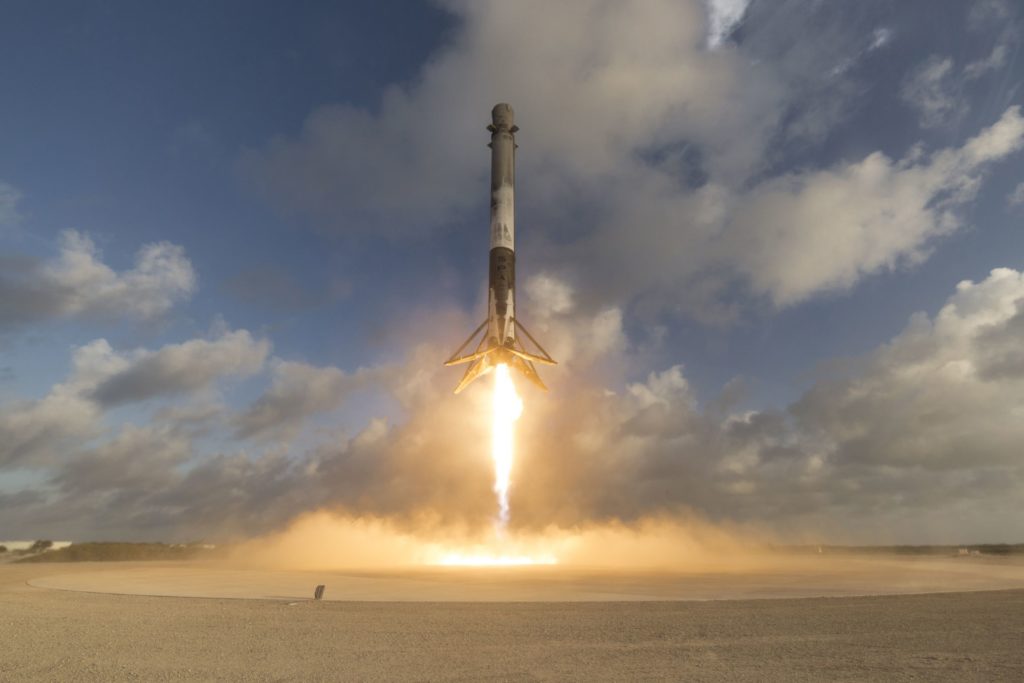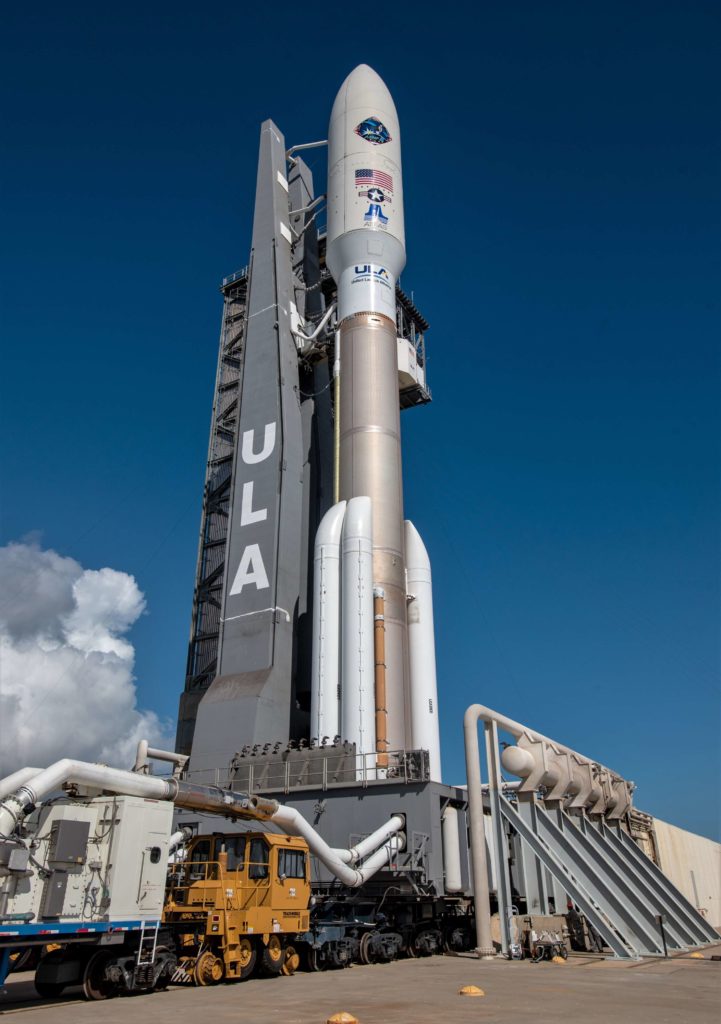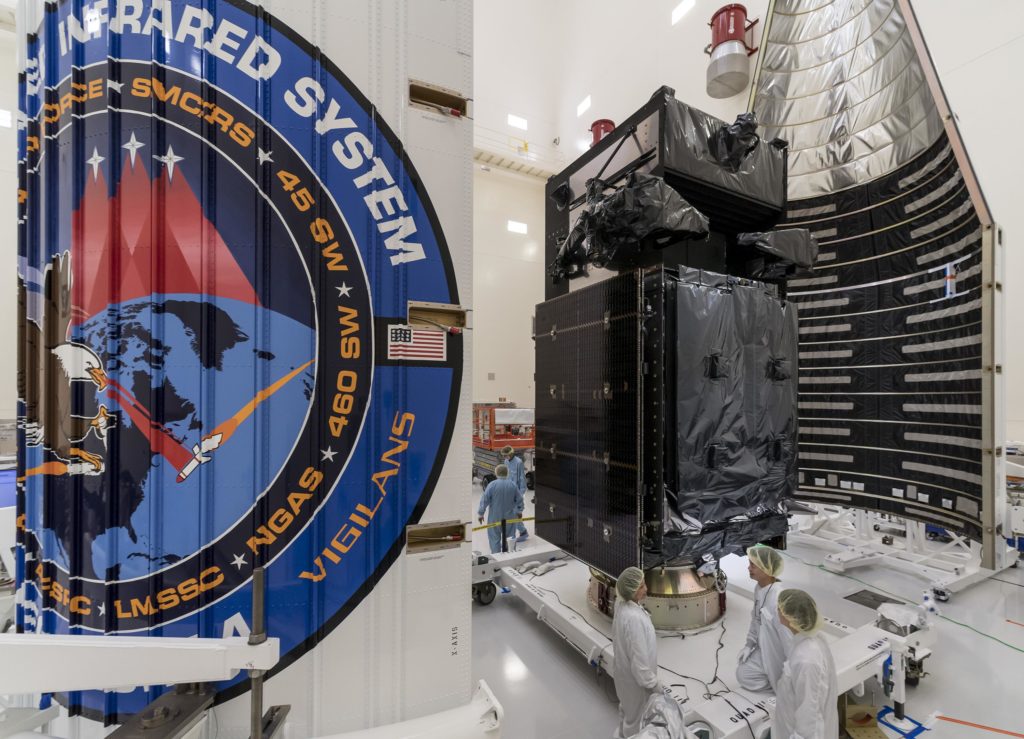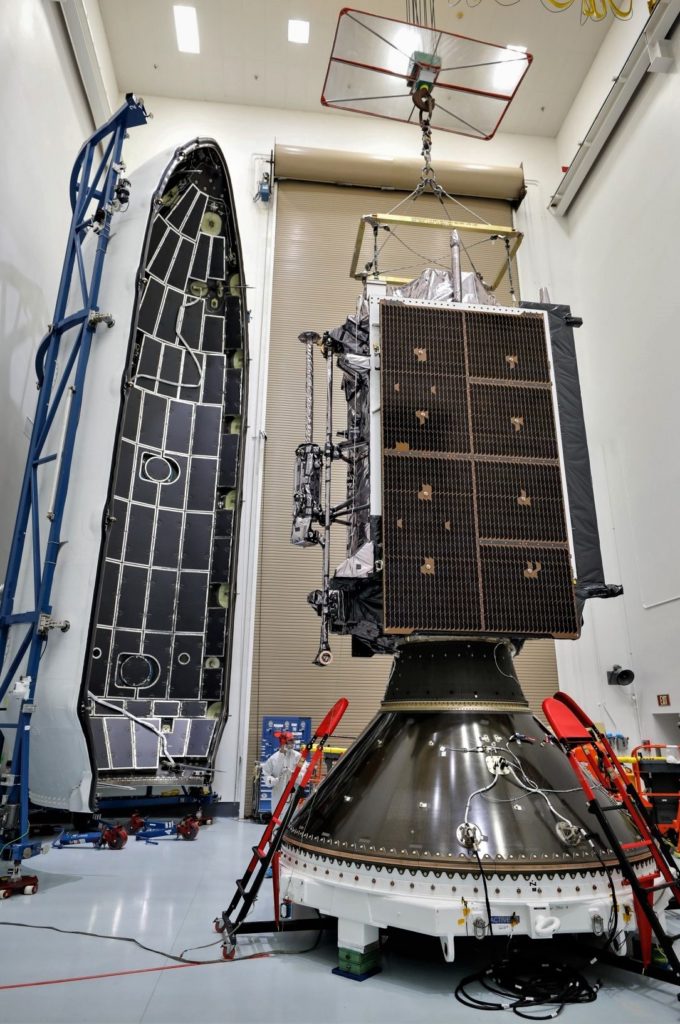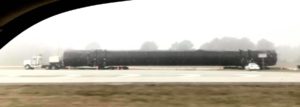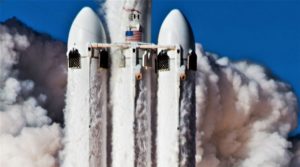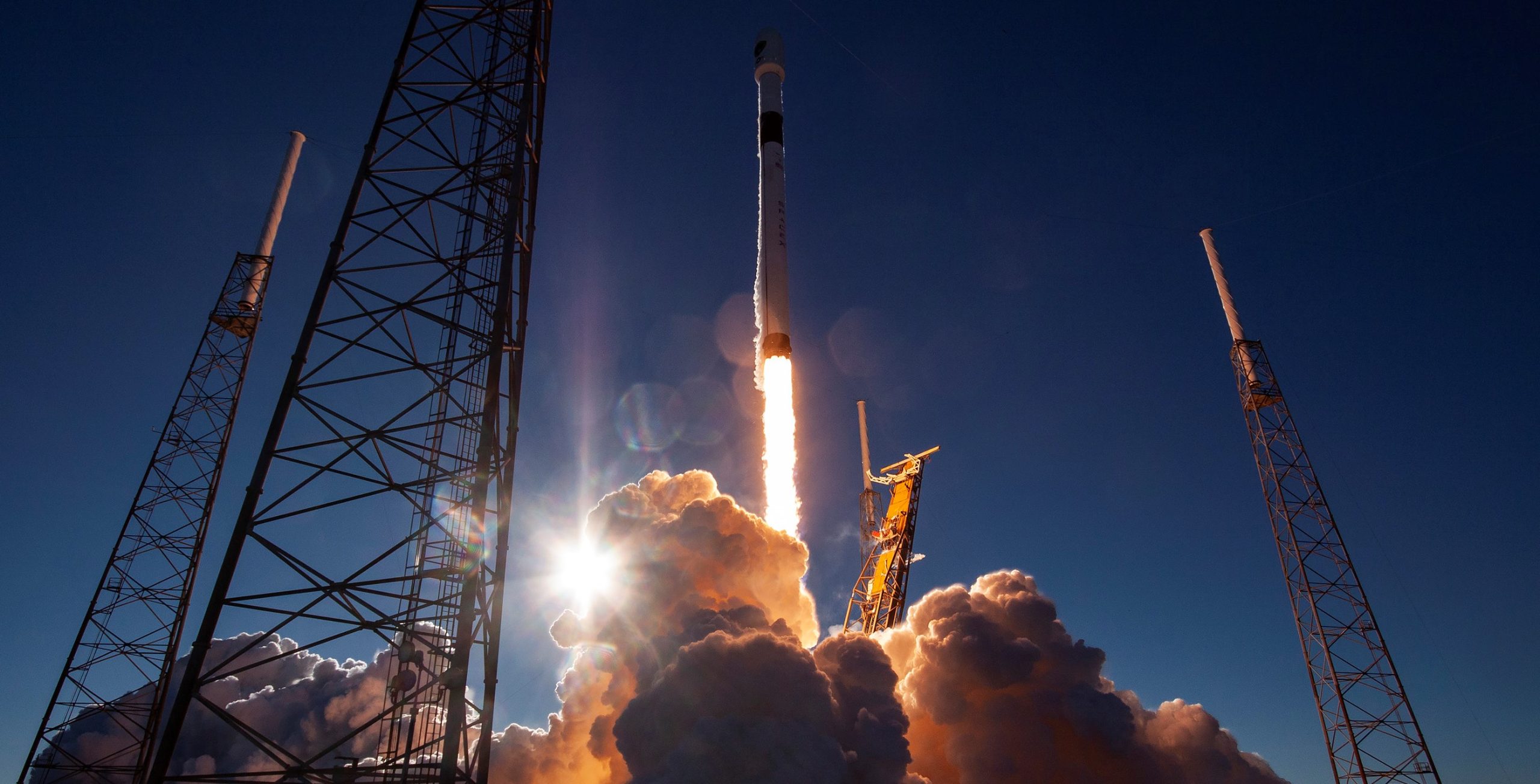
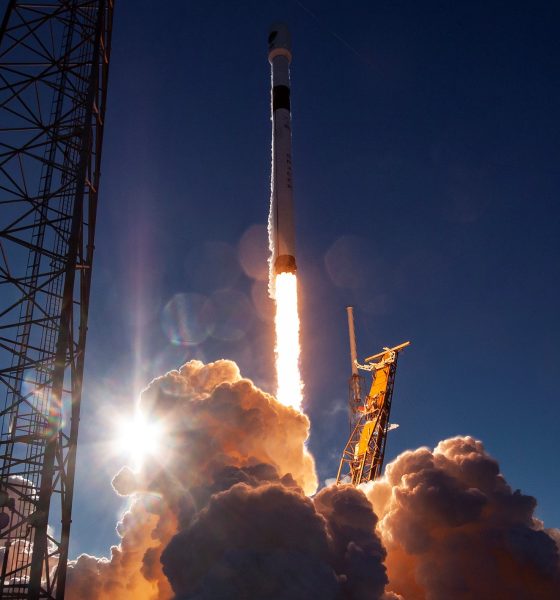
SpaceX
SpaceX’s Falcon 9 and Falcon Heavy win $297M in US military launch contracts
SpaceX and competitor United Launch Alliance (ULA) have been awarded three US military launch contracts apiece with an overall value of $297M (SpaceX) and $442M (ULA). While unconfirmed, this could mark the fourth launch contract awarded to Falcon Heavy in just half a year.
Set to nominally launch between 2021 and 2022, SpaceX received two contracts from the National Reconnaissance Office (NROL-85 and -87) and one from the USAF (AFSPC-44), while ULA received two missions from the USAF (SBIRS-5 and -6) and one from NRO (SILENTBARKER). While the announcement did not specify launch vehicle arrangements, it’s safe to assume that ULA will be flying SBIRS on Atlas V, while SpaceX will likely fly both NROL payloads on Falcon 9.
JUST IN: Air Force awards $739 million in launch contracts to ULA and SpaceX – https://t.co/6tMHINEk57 https://t.co/NYI2qbF68Y
— Sandra Erwin (@Sandra_I_Erwin) February 19, 2019
“SpaceX is proud that the Air Force has chosen our company to support our country’s defense with these critical national security space launches and to continue providing the best value in launch with the proven Falcon 9 and Falcon Heavy vehicles.” – SpaceX President & COO Gwynne Shotwell, 02/19/2019
“This is a full and open competition. … At present, ULA is the only launch provider certified for the SILENTBARKER and AFSPC-44 missions. However, it is anticipated that in the near future SpaceX will be launching the Falcon Heavy, which may be capable of meeting the SILENTBARKER and AFSPC-44 requirements.” – USAF SMC, 02/02/2018
In official comments made in a follow-up to the finalized RFP (requests for proposals) for the launch contracts the US military awarded On Feb. 19, 2019, the USAF Space and Missile Systems Center (SMC) offered some insight into the thought processes going on behind the scenes of the procurement initiative. While almost nothing is known about the payloads themselves, SMC appeared to confirm that SILENTBARKER (believed to be NROL-107) and AFSPC-44 could only be launched on ULA rockets at the time (Feb. 2018), although SpaceX’s Falcon Heavy was also reportedly an option. Provided just a few days before Falcon Heavy’s launch debut, SMC’s tentative inclusion of FH was understandable.
- After launching NROL-76 in May 2017, B1032 returned to Landing Zone-1 for a successful landing. (SpaceX)
- Atlas V 551 prepares to launch USAF satellite AEHF-4. (ULA)
- SBIRS GEO 3 (Flight 4) encapsulation. (USAF)
- GPS III SV01 is encapsulated in Falcon 9’s fairing. (SpaceX)
For a bit of historical context, SpaceX completed its first NRO mission (NROL-76) in May 2017 for an unknown sum, although safe estimates peg the Falcon 9 launch cost somewhere around $80-100M. SpaceX’s first official USAF EELV mission, the first upgraded GPS III satellite, was completed in December 2018 for around $82M (2016) and won an additional three GPS III launch contracts at an average per-mission value of ~$97M. Each GPS III satellite is estimated to cost no less than $573M, while the last four SBIRS (Space-Based Infrared System) geostationary satellites infamously wound up costing more than $1.7 billion apiece as a consequence of prime contractor Lockheed Martin incurring multiple delays and breaching price targets. SBIRS-5 and -6 were said by a Lockheed Martin executive to likely cost “20% less” than SBIRS 1-4, implying that each spacecraft will carry a price tag of at least $1.4B.
Given the sheer cost of the spacecraft and the Air Force’s stance on the SBIRS constellation being a critical part of ballistic missile early-warning defenses, it’s not particularly surprising that Atlas V was chosen over Falcon 9 or Falcon Heavy, a decision likely made to minimize latent risk – however little.

Falcon Heavy – contract #6?
In June 2018, the USAF announced that it had officially certified Falcon Heavy for Air Force missions and awarded SpaceX’s newest launch vehicle a $130M contract to launch its Air Force Space Command-52 spacecraft (AFSPC-52) in 2020. Weighing around 6350 kg (14,000 lbs), Falcon Heavy is tasked with placing the spacecraft into a geostationary transfer orbit of 185 by 35,188 kilometers (115 by 21,900 miles), a mission profile that curiously should be within the performance capabilities of an expendable Falcon 9. If AFSPC-44 is similar to -52, it could be launched by either SpaceX rocket and SMC’s vague $297M award fails to answer any questions thanks to the uncertainty of SpaceX NRO contract pricing. Still, it can be easily determined that SpaceX’s average launch cost ($99M) trounces ULA’s ($147M) by nearly 50%, potentially saving the US government and taxpayer a bit less than $150M.
- SpaceX Facebook group member Joshua Murrah also captured what is likely the third Falcon Heavy booster’s Florida arrival. (Joshua Murrah, 02/11/19)
- SpaceX Facebook group member Joshua Murrah captured two great photos of the second Falcon Heavy side booster to arrive in Florida in the last month. (Joshua Murrah, 01/17/19)
- The second (and third) flight of Falcon Heavy is even closer to reality as a new side booster heads to Florida after finishing static fire tests in Texas. (Reddit /u/e32revelry)
- Falcon Heavy clears the top of the tower in a spectacular fashion during its debut launch. (Tom Cross/Pauline Acalin)
Aside from AFSPC-52 and perhaps AFSPC-44, Falcon Heavy received an additional two commercial contracts from Swedish communications firm Ovzon and US company Viasat in October 2018. Following its February 2018 debut, the rocket’s next two missions (Arabsat 6A and USAF STP-2) are also imminent, with current info pointing to launch targets in March and April 2019, respectively. Combined, Falcon Heavy may now have six solid launch contracts manifested from 2019 to 2021. Meanwhile, NASA and international partners ESA and JAXA (among others) continue to express interest in and work towards the creation of a miniature crewed space station (“Gateway”) in an unusual orbit around the Moon, an aspiration the success of which will heavily depend on affordable commercial launches of a variety of Gateway components and resupply missions, at minimum.
If NASA’s Gateway and crewed Moon lander programs survive the United States’ 2020 election cycle, Falcon Heavy could be called into action as early as 2022 and have numerous additional contract opportunities in the 4+ years following. Ultimately, the US military’s Feb. 19 launch awards confirm that the taxpayer continues to reap the benefits of competition SpaceX has reintroduced into the monopolized US launch industry, while also reiterating the health and commercial value of SpaceX’s Falcon Heavy investment.
Check out Teslarati’s newsletters for prompt updates, on-the-ground perspectives, and unique glimpses of SpaceX’s rocket launch and recovery processes!

News
SpaceX shades airline for seeking contract with Amazon’s Starlink rival

SpaceX employees, including its CEO Elon Musk, shaded American Airlines on social media this past weekend due to the company’s reported talks with Amazon’s Starlink rival, Leo.
Starlink has been adopted by several airlines, including United Airlines, Qatar Airways, Hawaiian Airlines, WestJet, Air France, airBaltic, and others. It has gained notoriety as an extremely solid, dependable, and reliable option for airline travel, as traditional options frequently cause users to lose connection to the internet.
Many airlines have made the switch, while others continue to mull the options available to them. American Airlines is one of them.
A report from Bloomberg indicates the airline is thinking of going with a Starlink rival owned by Amazon, called Leo. It was previously referred to as Project Kuiper.
American CEO Robert Isom said (via Bloomberg):
“While there’s Starlink, there are other low-Earth-orbit satellite opportunities that we can look at. We’re making sure that American is going to have what our customers need.”
Isom also said American has been in touch with Amazon about installing Leo on its aircraft, but he would not reveal the status of any discussions with the company.
The report caught the attention of Michael Nicolls, the Vice President of Starlink Engineering at SpaceX, who said:
“Only fly on airlines with good connectivity… and only one source of good connectivity at the moment…”
CEO Elon Musk replied to Nicolls by stating that American Airlines risks losing “a lot of customers if their connectivity solution fails.”
American Airlines will lose a lot of customers if their connectivity solution fails
— Elon Musk (@elonmusk) December 14, 2025
There are over 8,000 Starlink satellites in orbit currently, offering internet coverage in over 150 countries and territories globally. SpaceX expands its array of satellites nearly every week with launches from California and Florida, aiming to offer internet access to everyone across the globe.
Currently, the company is focusing on expanding into new markets, such as Africa and Asia.
News
Tesla hints at Starlink integration with recent patent
“By employing polymer blends, some examples enable RF transmission from all the modules to satellites and other communication devices both inside and outside the vehicle.”

Tesla hinted at a potential Starlink internet terminal integration within its vehicles in a recent patent, which describes a vehicle roof assembly with integrated radio frequency (RF) transparency.
The patent, which is Pub. No U.S. 2025/0368267 describes a new vehicle roof that is made of RF-transparent polymer materials, allowing and “facilitating clear communication with external devices and satellites.”
Tesla believes that a new vehicle roof design, comprised of different materials than the standard metallic or glass elements used in cars today, would allow the company to integrate modern vehicular technologies, “particularly those requiring radio frequency transmission and reception.
Tesla has recently filed a US patent application on integrating RF transparent materials into the roof structure.
“facilitating clear communication with external devices and satellites”
Tesla fleet is getting @Starlink connectivity integration soon. LFG @Tesla @elonmusk… pic.twitter.com/bLa8YtPLd1
— Chansoo Byeon (@Chansoo) December 9, 2025
Instead of glass or metallic materials, Tesla says vehicles may benefit from high-strength polymer blends, such as Polycarbonate, Acrylonitrile Butadiene Styrene, or Acrylonitrile Styrene Acrylate.
These materials still provide ideal strength metrics for crashworthiness, stiffness for noise, vibration, and harshness control, and are compliant with head impact regulations.
They would also enable better performance with modern technologies, like internet terminals, which need an uninterrupted signal to satellites for maximum reception. Tesla writes in the patent:
“By employing polymer blends, some examples enable RF transmission from all the modules to satellites and other communication devices both inside and outside the vehicle.”

One of the challenges Tesla seems to be aware of with this type of roof design is the fact that it will still have to enable safety and keep that at the forefront of the design. As you can see in the illustration above, Tesla plans to use four layers to increase safety and rigidity, while also combating noise and vibration.
It notes in the patent that disclosed examples still meet the safety requirements outlined in the Federal Motor Vehicle Safety Standards (FMVSS).
Starlink integrated directly into Tesla vehicles would be a considerable advantage for owners. It would come with a handful of distinct advantages.
Initially, the inclusion of Starlink would completely eliminate cellular dead zones, something that is an issue, especially in rural areas. Starlink would provide connectivity in these remote regions and would ensure uninterrupted service during road trips and off-grid adventures.
It could also be a critical addition for Robotaxi, as it is crucial to have solid and reliable connectivity for remote monitoring and fleet management.
Starlink’s growing constellation, thanks to SpaceX’s routine and frequent launch schedule, will provide secure, stable, and reliable internet connectivity for Tesla vehicles.
Although many owners have already mounted Starlink Mini dishes under their glass roofs for a similar experience, it may be integrated directly into Teslas in the coming years, either as an upgrade or a standard feature.
Investor's Corner
SpaceX IPO is coming, CEO Elon Musk confirms
However, it appears Musk is ready for SpaceX to go public, as Ars Technica Senior Space Editor Eric Berger wrote an op-ed that indicated he thought SpaceX would go public soon. Musk replied, basically confirming it.

Elon Musk confirmed through a post on X that a SpaceX initial public offering (IPO) is on the way after hinting at it several times earlier this year.
It also comes one day after Bloomberg reported that SpaceX was aiming for a valuation of $1.5 trillion, adding that it wanted to raise $30 billion.
Musk has been transparent for most of the year that he wanted to try to figure out a way to get Tesla shareholders to invest in SpaceX, giving them access to the stock.
He has also recognized the issues of having a public stock, like litigation exposure, quarterly reporting pressures, and other inconveniences.
However, it appears Musk is ready for SpaceX to go public, as Ars Technica Senior Space Editor Eric Berger wrote an op-ed that indicated he thought SpaceX would go public soon.
Musk replied, basically confirming it:
As usual, Eric is accurate
— Elon Musk (@elonmusk) December 10, 2025
Berger believes the IPO would help support the need for $30 billion or more in capital needed to fund AI integration projects, such as space-based data centers and lunar satellite factories. Musk confirmed recently that SpaceX “will be doing” data centers in orbit.
AI appears to be a “key part” of SpaceX getting to Musk, Berger also wrote. When writing about whether or not Optimus is a viable project and product for the company, he says that none of that matters. Musk thinks it is, and that’s all that matters.
It seems like Musk has certainly mulled something this big for a very long time, and the idea of taking SpaceX public is not just likely; it is necessary for the company to get to Mars.
The details of when SpaceX will finally hit that public status are not known. Many of the reports that came out over the past few days indicate it would happen in 2026, so sooner rather than later.
But there are a lot of things on Musk’s plate early next year, especially with Cybercab production, the potential launch of Unsupervised Full Self-Driving, and the Roadster unveiling, all planned for Q1.
